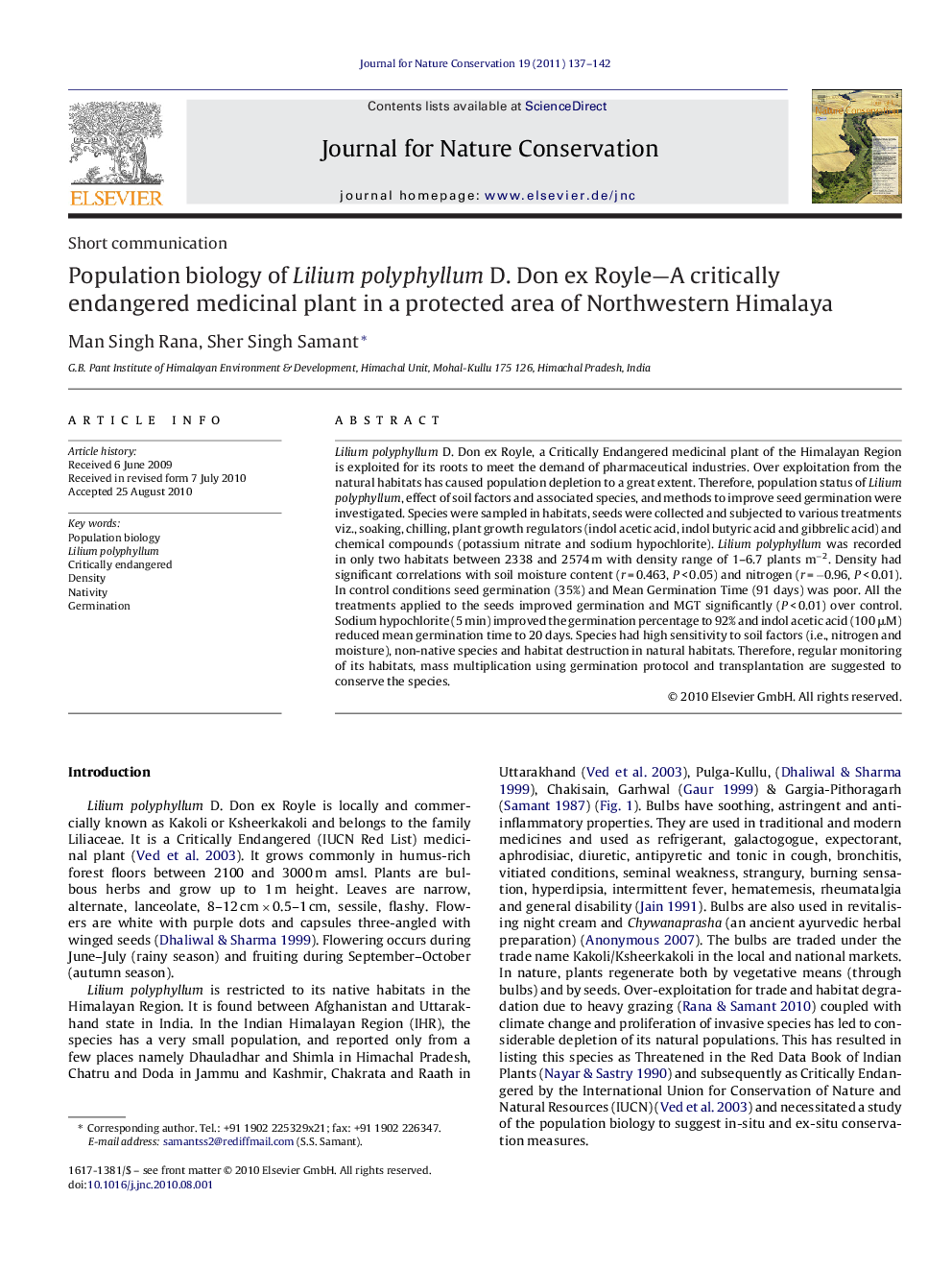| Article ID | Journal | Published Year | Pages | File Type |
|---|---|---|---|---|
| 4400083 | Journal for Nature Conservation | 2011 | 6 Pages |
Abstract
Lilium polyphyllum D. Don ex Royle, a Critically Endangered medicinal plant of the Himalayan Region is exploited for its roots to meet the demand of pharmaceutical industries. Over exploitation from the natural habitats has caused population depletion to a great extent. Therefore, population status of Lilium polyphyllum, effect of soil factors and associated species, and methods to improve seed germination were investigated. Species were sampled in habitats, seeds were collected and subjected to various treatments viz., soaking, chilling, plant growth regulators (indol acetic acid, indol butyric acid and gibbrelic acid) and chemical compounds (potassium nitrate and sodium hypochlorite). Lilium polyphyllum was recorded in only two habitats between 2338 and 2574 m with density range of 1-6.7 plants mâ2. Density had significant correlations with soil moisture content (r = 0.463, P < 0.05) and nitrogen (r = â0.96, P < 0.01). In control conditions seed germination (35%) and Mean Germination Time (91 days) was poor. All the treatments applied to the seeds improved germination and MGT significantly (P < 0.01) over control. Sodium hypochlorite (5 min) improved the germination percentage to 92% and indol acetic acid (100 μM) reduced mean germination time to 20 days. Species had high sensitivity to soil factors (i.e., nitrogen and moisture), non-native species and habitat destruction in natural habitats. Therefore, regular monitoring of its habitats, mass multiplication using germination protocol and transplantation are suggested to conserve the species.
Related Topics
Physical Sciences and Engineering
Earth and Planetary Sciences
Earth and Planetary Sciences (General)
Authors
Man Singh Rana, Sher Singh Samant,
